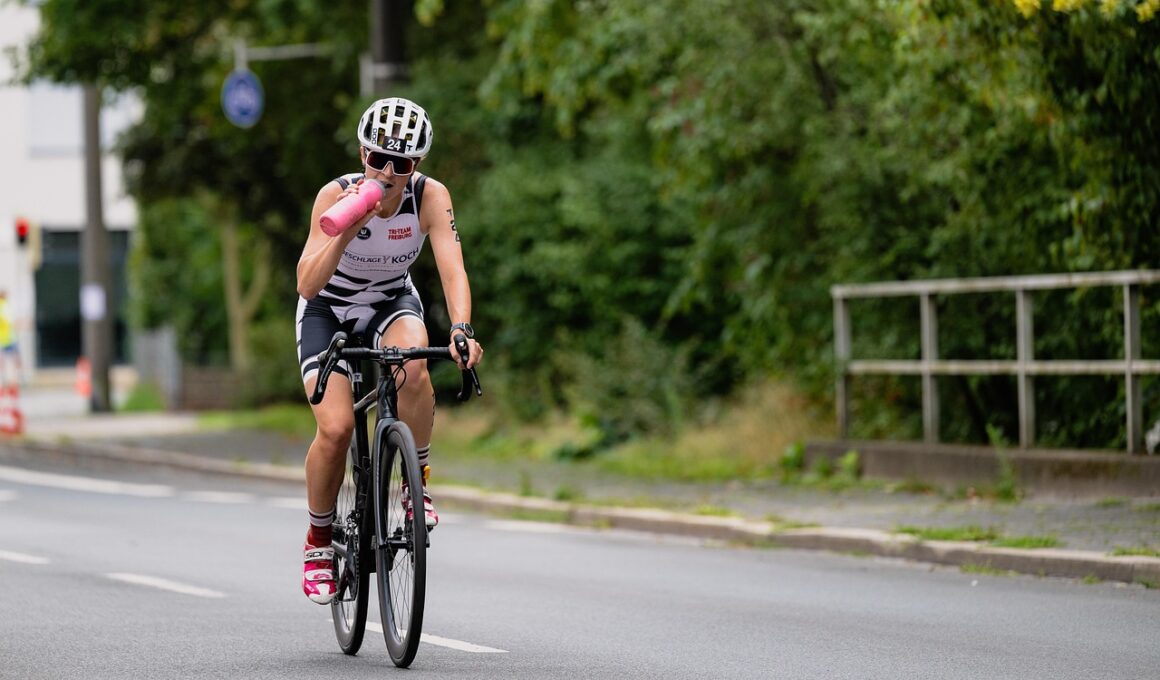Adapting Training Routines to Prevent Injury Recurrence
Injury recurrence remains a significant concern for athletes during rehabilitation. It is essential to take a multifaceted approach that addresses both physiological and psychological aspects of recovery. Understanding the initial causes of injuries can provide valuable insights to help shape training routines that reduce the risk of relapses. Athletes should focus on slow, gradual reintroduction of intensity and sport-specific movements. This process assists in rebuilding strength and stamina, along with enhancing proprioception, which is vital for preventing injuries. Developing a comprehensive training plan that incorporates varied types of exercise, such as strength training, flexibility, and cardiovascular conditioning, can facilitate a more robust recovery. Additionally, communication with trained professionals is crucial. Regular consultations with physiotherapists or trainers help monitor progress and ensure that the athlete is not progressing too quickly. It is crucial to maintain a proactive mindset when returning to training; simply pushing oneself harder can often lead to more significant injuries. Lastly, implementing recovery techniques such as stretching and foam rolling can assist in moderating soreness and supporting the rehabilitation process. Overall, adopting this approach helps athletes achieve their performance goals safely.
An effective injury rehabilitation program must encompass sport-specific training. Such training not only focuses on enhancing performance but also emphasizes injury prevention methods. Athletes should consider segmenting their workout routines in a manner that prioritizes stability and strength building while gradually integrating sport-related movements. This is critical since injuries can often result from sudden or improper execution of movements, therefore familiarity with proper biomechanics is essential. Athletes can incorporate exercises that develop core muscle strength, as strengthening this region aids in preventing imbalances and provides better control during activities. Additionally, attention needs to be given to flexibility. A thorough warm-up routine that includes stretching can help prevent muscle strain. Once the athlete has regained their baseline fitness level, it is essential to begin incorporating functional exercises, which simulate the movements performed in the athlete’s sport. For example, agility drills may aid in enhancing footwork, which is especially important in sports like soccer or basketball. Furthermore, working closely with coaches to develop tailored strategies is advantageous. This team effort can greatly enhance an athlete’s chances of returning to full form. Ultimately, consistency in training leads to better preparedness.
Nutrition and Recovery
Nutrition plays a crucial role in both recovery and performance for athletes. After an injury, the body requires adequate nutrients to heal effectively. A well-balanced diet rich in lean proteins, healthy fats, and carbohydrates is essential for supporting muscle repair and growth. Foods that are anti-inflammatory, such as fish, nuts, and leafy greens, can promote healing and help reduce soreness. Additionally, hydration is equally important, as it affects not just recovery but also overall performance. Athletes should ensure they are consuming sufficient fluids to keep their bodies functioning optimally. Additionally, consulting with a sports nutritionist can provide tailored dietary strategies that suit individual recovery needs. Supplements may also be beneficial; for instance, omega-3 fatty acids and vitamin D are known to aid recovery. Planning meals around training can optimize energy levels and promote better results. Notably, timing meals to coincide with post-workout recovery windows can enhance muscle recovery processes. Keeping track of nutritional intake through journals or mobile apps can help ensure that dietary guidelines are followed. Ultimately, a comprehensive approach to nutrition significantly contributes to an athlete’s successful recovery and return to competitive sports.
It is equally important to integrate mental conditioning into an athlete’s rehabilitation program. Mental resilience and focus can dramatically influence recovery outcomes. Athletes often face psychological barriers during their return to physical activity, including fear of re-injury. It is essential to foster a positive mindset as part of an injury recovery journey. Athletes should consider techniques such as visualization, meditation, and mindfulness exercises to bolster mental strength. Engaging in discussions with sports psychologists can also provide valuable strategies to overcome fears associated with returning to play. Setting realistic and achievable goals can create a sense of progression that enhances an athlete’s confidence. Additionally, finding support amongst teammates or coaches is invaluable during recovery. Being part of a supportive environment can enhance motivation and accountability. It can also help in navigating emotions that may arise during challenging times. Journaling experiences can provide perspective by tracking both physical and emotional progress. Ultimately, equipping oneself with mental resilience supports the entire rehabilitation process and is pivotal in successfully preventing injury recurrence.
Monitoring Progress Through Data
In the realm of athletic performance, the use of technology has transformed how athletes monitor progress during their rehabilitation journey. Wearable devices and apps provide data that can help trainers and athletes gain insights into performance metrics. This technology allows for real-time tracking of heart rate, movement patterns, and other significant variables. Such data can inform adjustments in training routines aimed specifically at enhancing recovery while minimizing the risk of re-injury. Utilizing these metrics can help athletes gauge their readiness for specific activities and push their limits safely. Additionally, regular assessments such as strength tests and flexibility evaluations can pinpoint areas needing attention. Tracking improvements and setbacks through structured data enhances accountability and motivation, essential factors in recovery. By focusing on measurable progress, athletes can also recognize achievements that might otherwise go unnoticed. Furthermore, sharing data with a coaching team allows for informed decision-making and personalized training adjustments. This collective approach ultimately fosters an environment of growth. It is vital for athletes recovering from injuries to understand their bodies to tailor their routines accordingly, ensuring sustainable long-term success in performance.
In the context of injury prevention and rehabilitation, the principle of cross-training cannot be overlooked. Cross-training involves engaging in different forms of exercise that do not place undue strain on the injured area while promoting overall fitness. By incorporating a variety of activities, athletes can maintain their conditioning level and prevent detraining. For instance, a runner who sustains a knee injury may opt for swimming or cycling during the rehabilitation phase. These low-impact activities provide cardiovascular benefits without further aggravating the injury. Additionally, cross-training allows athletes to work on their weaknesses, enhancing overall physical capabilities. This diversified approach provides a mental break from the primary sport while evolving the athlete’s skill set. It brings renewed enthusiasm and can help reduce feelings of isolation during rehabilitation. Importantly, incorporating cross-training into a rehabilitation program requires careful planning; consulting with a coach or physiotherapist can ensure optimal choice of activities. Ultimately, developing a cross-training strategy supports a holistic recovery while keeping athletes motivated and engaged in their fitness journey.
Long-term Maintenance Strategies
Once back in full training, it remains crucial to implement long-term injury prevention strategies. Recovery should not be viewed as a point of conclusion, but rather as a continuous process of maintenance and adaptation. Athletes should incorporate regular assessments into their routine to identify any signs of physical imbalances or weaknesses. Adapting training modalities and incorporating preventive exercises helps ensure continued compliance with safety measures. Regularly participating in strength and mobility work can enhance overall performance and resilience against potential injuries. It is important to cultivate an attitude of lifelong commitment to physical well-being. Remaining flexible and open to adjustments in training routines helps athletes cope with their evolving fitness needs. Additionally, remaining updated on new training methodologies and injury prevention techniques can positively impact an athlete’s performance longevity. Engaging with professional development opportunities such as workshops can enhance knowledge and skills. Finally, building strong communication channels with trainers and healthcare providers is vital for sustaining optimal health. With diligence and commitment, athletes can significantly decrease the chances of suffering from injuries while maximizing their performance potential for years.
Ultimately, adapting training routines to prevent injury recurrence involves planning, patience, and precision. Athletes must take a holistic view of their health by incorporating mental and physical conditioning into their recovery. Setting realistic objectives, staying informed through data, and communicating effectively with professional teams are paramount. Building a comprehensive training strategy that includes cross-training, sport-specific techniques, and recovery strategies leads to sustainable progress. Furthermore, the role of nutrition cannot be overstated in healing and performance enhancement. By prioritizing these elements, athletes can foster resilience against future injuries. Visualization and mindfulness practices provide mental fortitude, enabling a smoother transition back to training. Regular evaluations ensure that both progress and challenges are addressed. Moreover, considering the feedback from coaches and therapists fosters a sense of teamwork in rehabilitation efforts. This community support reinforces motivation and dedication to recovery goals. At the end of the day, success in adapting training routines will promote a balanced and effective athletic career. Athletes who commit to these principles will not only improve their performance but also extend their careers through proactive injury prevention strategies.


